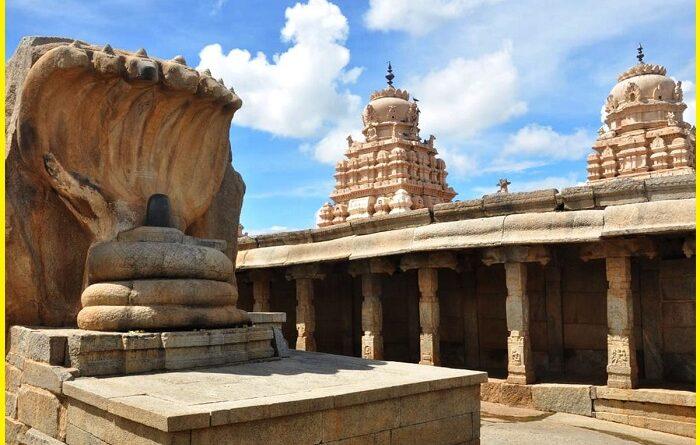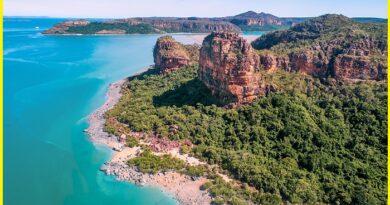An Epic Structure in India-The Lepakshi Veerbhadra Temple
Veerabhadra Temple Lepakshi
Lepakshi Veerabhadra temple is located in the Anantpur district of the state of Andhra Pradesh, India. The temple is dedicated to the Virabhadra, a fierce incarnation of Lord Shiva. Built-in the 16th century, the architectural features of the temple are in the Vijayanagara style with carvings and paintings on its wall. The village is called Lepaksha, Lepakshi and Lepakshipura, due to the inscriptions engraved on the prakara walls of the temple, The literal meaning of the word is an embalmed eye or a painted eye. The Lepakshi temple is a marvel of archaeological and artistic splendour. It is said that the place dates back to the Indian epic Ramayana. According to it When bird Jatayu, was wounded by the king of Lanka Ravana. Jatayu fell here after a battle against the Ravana who was carrying away Sita. When Rama reached the place, he saw the bird and said compassionately to him, Le Pakshi- meaning “arise, bird” in Telugu.
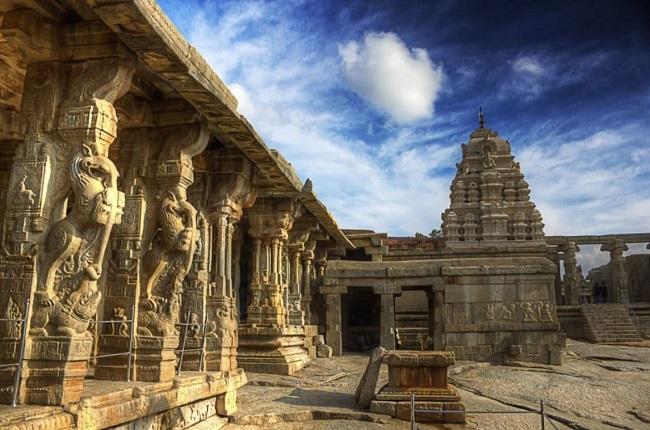
The Lepakshi temple has been built on the southern side of Lepakshi town, on a low altitude hillock of a large exposure of granite rock. It is in the shape of a tortoise and is hence known as Kurma Saila. Nandi is a gigantic bull sculpture carved out of a huge granitic rock. This monolithic sculpture is a unique structure, that faces west and is looking towards the Linga located at Sri Veerabhadra temple. On the eastern face of a granite boulder, is a basaltic Siva Linga canopied by a monolithic sculpture of a 7-hooded Naga.
Lepakshi Temple History
The Lepakshi temple was built in 1530 AD by Virupanna Nayaka and Viranna. Both brothers were Governors under the Vijayanagar Empire during the reign of King Achutaraya. According to Skanda Purana, the temple is one of the Divya-kshetras and an important pilgrimage site of Lord Shiva. The presiding deity worshipped here is Lord Veerabhadra, the fiery god Lord Shiva. The temple can be divided into three sections ‘MukhaMandapa’, ‘ArthaMandapa’ and ‘GarbhaGriha’, and the ‘KalyanaMandapa’. A 10-day-long festival is celebrated here which is attended by Shiva devotees.
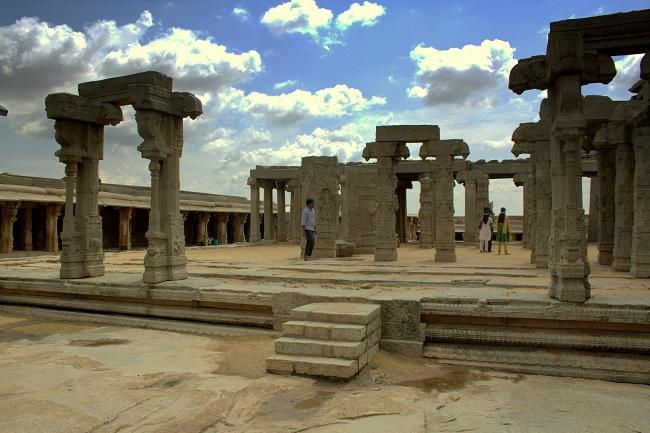
The discovery of Ashokan Rock Edicts at Yerragudi in the same district as Lepakshi and other sites indicates Mauryan rules and then under Satavahans, Chalukyas of Badami and the Nolambas. The Nolambas were in possession of it till the 10th century CE. After the Nolambas, the Chalukyas of Kalyani and then Hoysalas ruled till the first quarter of the 13th century CE. In 1346 CE, King Harihara constructed a fort at Penugondaas marking the start of the Vijayanagara rule over the region. The development of the temple complex can be classified under three broad phases ranging from 1100-1800 CE based on its architectural advancements. The first phase comes between 1100-1350 CE, during which important architectural features such as pillars and pilasters developed, which contain features of Late Chola, Pandya, and Hoysala styles and of the early Vijayanagara Period.
In the next phase, major building activity took place from 1350-1600 CE representing the period of matured Vijayanagara architecture. During this period, the area was developed into a large complex by adding several shrines and multi-pillared unfinished mandapas. The last phase comes between 1600-1800 CE during which no significant structure has come except for some minor shrines.
Also read-An Incredible Vietnamese island in the Gulf of Thailand-Phu Quoc Island
The architecture of the Lepakshi
The Lepakshi temple is built in the Vijayanagara architectural style and consists of three parts, an assembly hall, an antechamber and a Sanctum Sanctorum. Two enclosures encircle the temple and the outer walled enclosure has three gates. A hall full of sculptures and paintings leads to the Sanctum Sanctorum. The painted image is all of the celestial beings, saints, musicians and dancers, along with images of the 14 avatars of Shiva. The Sanctum is flanked by carved figurines of Ganga and Yamuna. Images of horses and soldiers adorn the exterior columns. The hall also features images of Natesha and Brahma.
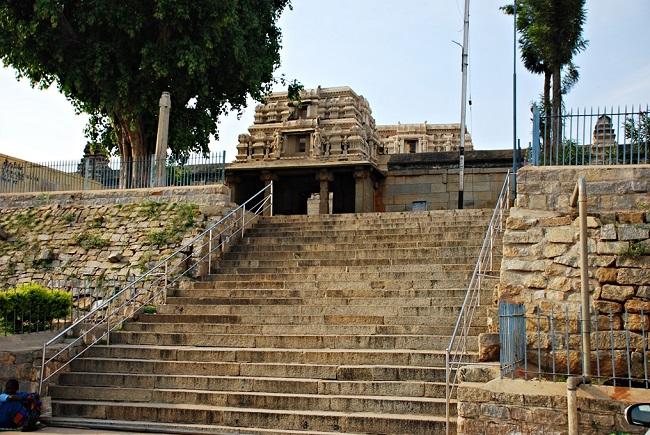
Sculpture work with different themes from Hindu mythology, Pauranic beliefs and traditions, and flora and fauna carved on the different components of the temple such as pillars, the ceiling of mandapas and naturally existing granite boulders. Monolithic sculptures like Naga-Siva-linga, Ganesa and the massive stone engraved footprint represent the artistic brilliance of that time.
Best Attraction in Lepakshi Andhrapradesh
Lepakshi Temple Hanging pillar
This temple has many features, 72 Pillars have been used in the construction of this temple. One of these 72 Pillars is not ground up, it is raised slightly above the ground. People slide clothes from one side to the other side. For this reason, this temple is famous not only in India but worldwide. The miraculous hanging pillar is absolutely stunning, the rock-solid stone pillar is indeed hanging and is suspended, not touching the floor. It is tribute to the engineering genius of ancient and medieval India’s temple builders.
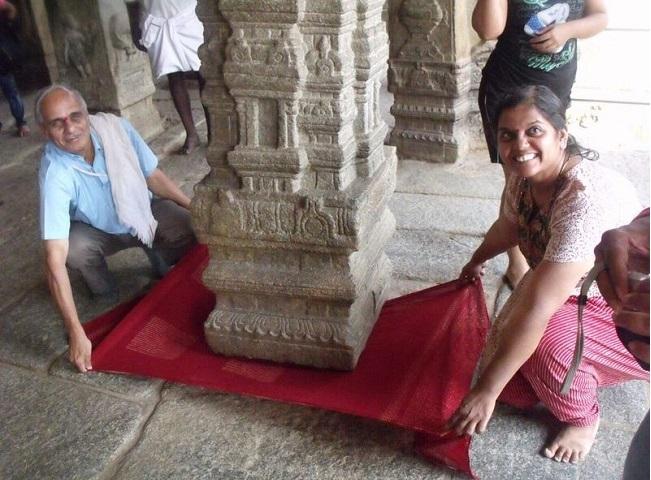
It is said that during the British era, a British engineer tried to move it in an unsuccessful attempt to uncover the secret of its support. No one after him has been able to explain the mystery of how the hanging pillar at the Lepakshi temple was crafted.
Jataayu Park at Lepakshi
Jatayu Park is the best attraction in the village of Lepakshi. Jatayu is a large vulture mentioned in the Hindu Epic Ramayana. As per the Epic, it fell down from the skies when he was attacked by Ravana in this village. The park has a small hill of rocks, where the statue of the bird is at the highest point of the rocks. A well-maintained garden is established all around the rocky hill. Visitors can climb metallic steps to reach the top.
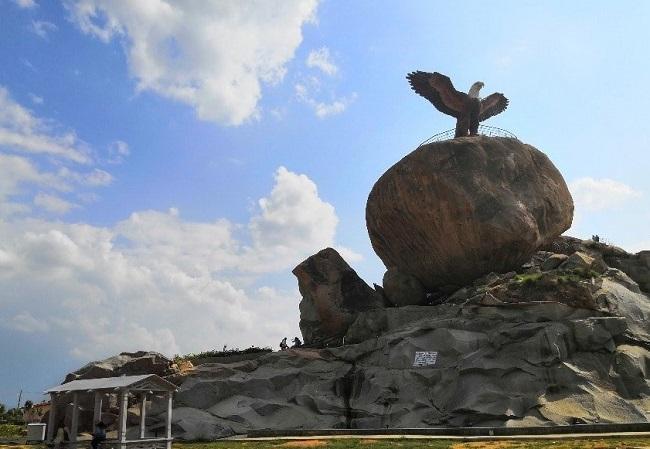
Fresco paintings
Fresco painting is a feature in the Vijayanagara style with carvings and paintings on every exposed surface of the temple. Fresco paintings with scenes of Rama and Krishna from epic tales of the Ramayana, Mahabharata and Puranas are particularly detailed in very bright fabrics and colours.
Lepakshi Nandi
About 200 meters away from the temple is a very large Nandi (bull) of Shiva, carved out of a single rock exposure, which is said to be the largest of its type in the world. Apart from this within the premises of the temple, on the eastern wing, is a separate chamber with Shiva and his consort Parvati carved on a rock. The image of Lord Vishnu is also another pilgrimage place. On its eastern side, is a large stone edifice of granite rock, carved into a coiled multi-hooded serpent, giving a brilliant cover over a linga.
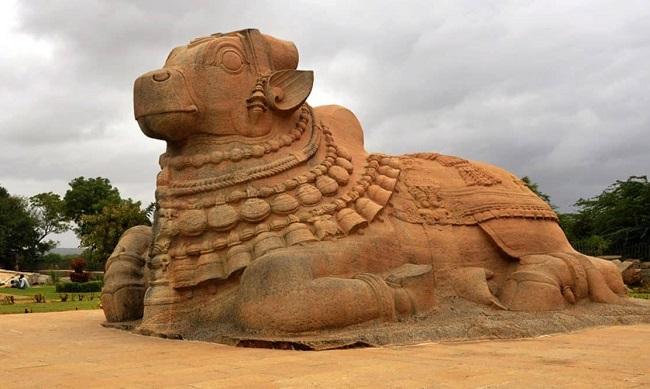
The temple hosts a ten-day festival every year during the month of February. This also includes the much-awaited car festival. During this period, the temple is thronged by devotees who come for the blessings of the Lord and to take part in the proceedings.
How to reach Lepakshi Temple
Lepakshi is 140 kilometres away from Bangalore and is the nearest airport. The nearest railhead is Hindupur is about 12 km away. Lepakshi is well connected by road to neighbouring cities and towns. The temple is approached via National Highway NH7.
